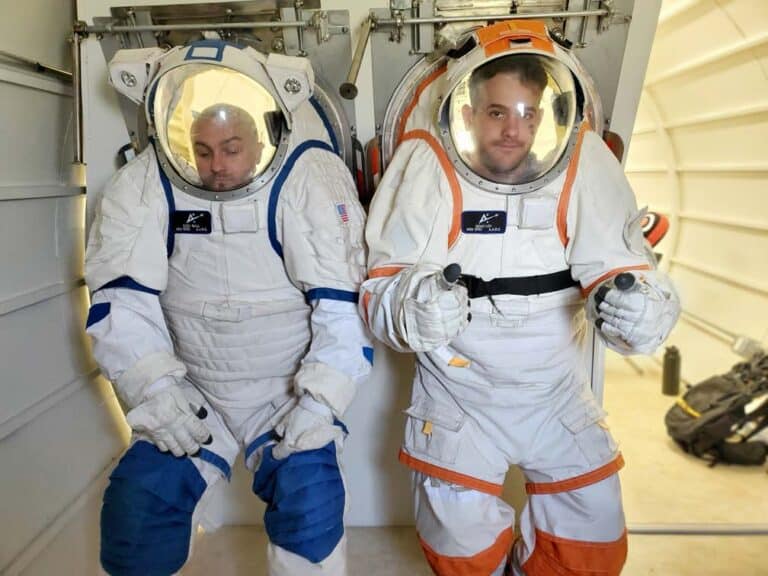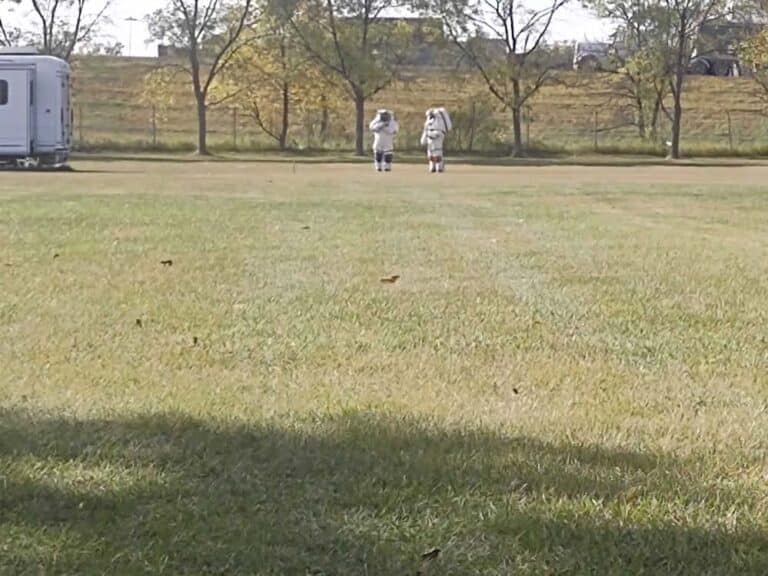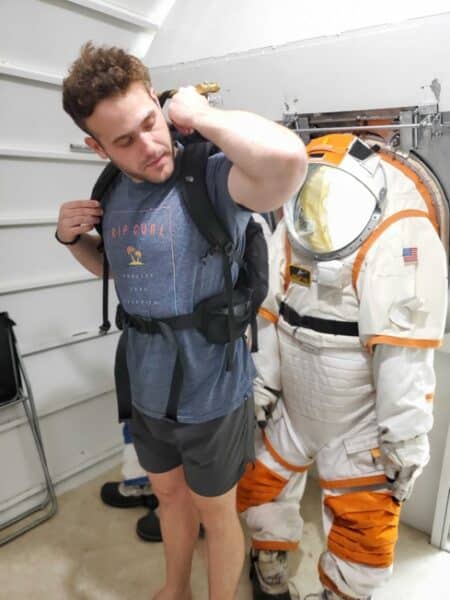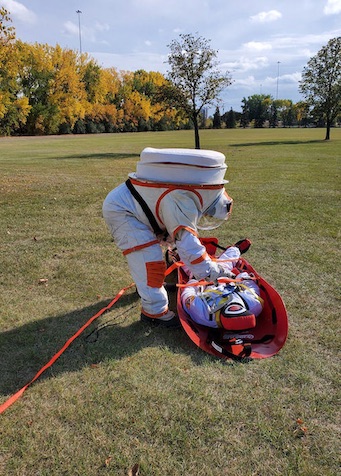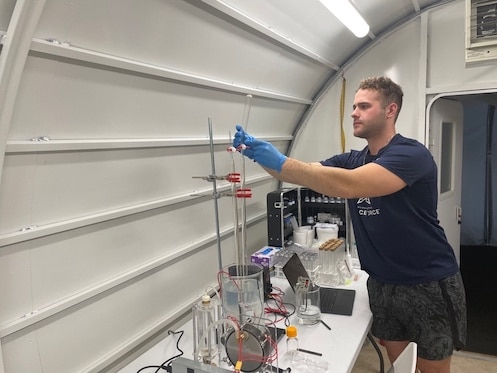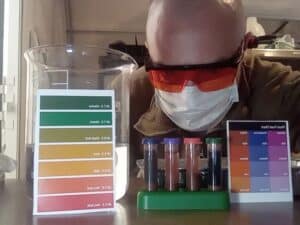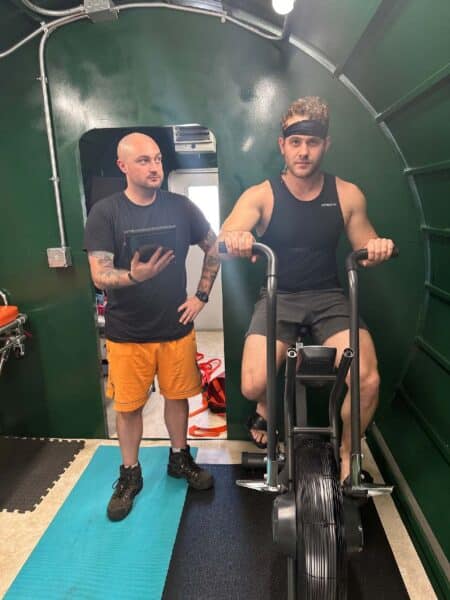By Dr. Kristen Miller | 12/30/2022
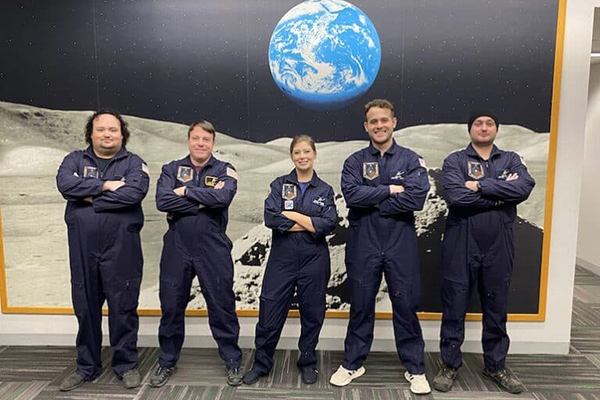
During the fall of 2022, the American Public University System Analog Research Group (AARG) completed its third space research mission. An analog mission is a terrestrial simulation designed to mimic life in space, and participants – known as analog astronaut crews – are isolated in specially constructed facilities for a predetermined period. During that time, the crews live, work and perform research as astronauts.
While analog facilities cannot exactly duplicate all of the conditions of space habitats, they do provide excellent opportunities to study different aspects of the astronaut experience. For instance, they provide an environment where protocols, crew relations and important research can be performed with varying degrees of realism. For the crews, it’s the chance to gain firsthand experience of the astronaut lifestyle and work as a member of space a research team.
Overview of ARG-3I’s Space Research
Four graduate and undergraduate students from our space studies department spent 14 days in the Inflatable Lunar-Mars Analog Habitat (ILMAH), located on the University of North Dakota (UND) campus in Grand Forks, North Dakota. This space research mission marked AARG’s third time at ILMAH; it began on September 28 and ended on October 11.
The four-person crew consisted of:
- Alexis Lojek, crew commander
- Noah Loy, Sarah Guthrie and Cody Ball, mission specialists
Tyler Hines, another space studies undergraduate student, acted as the flight director for ARG-3I, with Sarah Guthrie as deputy flight director. The flight directors were responsible for mission planning and preparation.
The mission motto was “Tercio est Leporem,” which roughly translates to “the third time’s the charm.” This motto proved to be very apt as the mission was highly successful.
The ARG-3I crew had an ambitious schedule involving a wide range of research projects, focusing on extravehicular activities (EVAs), technology testing and psychology studies. Other research projects included plant growth studies and participation in research projects contributed by UND students and partners.
EVA Research
The crew devoted a major portion of their time to a variety of EVA studies. One of the strengths of ILMAH is the availability of realistic EVA suits that the crew can use. The North Dakota Experimental 2 – Analog Trainer (NDX-2AT) suits are trainer versions of spacesuit prototypes and are weighted to simulate lunar gravity.
The ARG-3I crew evaluated improvements to both the mobility and fit of the suits through a series of space research activities. They also continued the EVA communications study initiated during the ARG-2I mission.
This third study aimed to improve the audio and visual communications between astronauts participating in an EVA and the intra-vehicular activity (IVA) support team. High-quality communications are vital for safety during EVAs, which are inherently risky due to increased exposure to the space environment of space, which is not supportive of life.
Anytime crews venture outside the protection of their spacecraft, they are at increased risk of injury and even death. Improving communications during EVAs helps the IVA identify and mitigate these risks.
Monitoring suit levels allows the IVA team to detect and prevent potential health hazards before conditions reach dangerous levels. The crew also worked with the Kinetic Utilization Resource Tool (KURT) to further investigate EVA rescue maneuvers initiated during ARG-2i. All of these studies represent important contributions to the safety of future astronauts.
Technology Testing
One of the new research studies performed during ARG-3I involved testing the technology to create oxygen through electrolysis of water. Water molecules are composed of oxygen and hydrogen atoms, both of which can be used as a fuel source. In addition to its potential for fuel, oxygen is important for life support.
Water is an abundant resource in space; large amounts of water have been detected on both the moon and Mars. Off-world settlements can use this water as a source of fuel and life support if it can be effectively mined and processed on site, which would allow lunar and Martian settlements to be less reliant on Earth resources.
The AARG-3I crew tested oxygen production using a small electrolysis device to investigate how different conductors and solutes affect production rates and to determine how much power was needed to produce oxygen. The data from this space research experiment provided important insights into the best environment to conduct electrolysis efficiently and sustainably.
Psychology Studies
The ARG-3I crew participated in a series of continuing studies evaluating the effects of living in an isolated, confined environment (ICE). These projects are part of an ongoing AARG research initiative to better understand how the stress induced by ICE affects crew interactions and how to mitigate these effects.
ICE is a serious concern for space exploration. Both spacecraft and potential surface habitats represent isolated, high-risk environments, which cause detrimental psychological effects in spacecraft crews.
Analog environments, however, are ideal locations to test crew relations and stress mitigation strategies. The ARG-3I crew participated in AARG’s current Facial Emotion Recognition and Mindfulness Breathing studies, extending the knowledge gained from previous missions. They also participated in a new sleep study evaluating the effects of increased levels of CO2, common in ICE, on sleep quality and mood.
Plant Growth Studies
AARG has performed many different plant growth experiments during our time at ILMAH, thanks to the habitat’s high-quality plant production module. For this mission, the crew participated in a unique study investigating the possibility of using humanure as a growth medium for a variety of vascular plants, including cucumber and sweet peppers.
The ARG-3I crew also participated in several studies in collaboration with UND and its partners. These space research projects included a cardiobreath study to evaluate the importance of exercise for astronaut crew health. This study was run through a partnership between Simon Frasier University and UND, and astronauts on the International Space Station have also performed this research.
Biosolids are currently used in many countries and provide a possible solution to the problem of nutrient-poor growing materials (regolith) on the Moon and Mars. During ARG-3I, the crew studied the growth of a variety of plants in simulated regolith, using humanure as a fertilizer during the mission. They also analyzed the soil samples to determine the ideal ratio for plant growth as well as the health of the plants.
Collaborative Space Research with UND
ARG-3I also helped maintain a plant growth study for UND and used a UND-developed time-delay system for communications, known as ECHO. Due to the distance between the Earth and Mars, communication delays between crews and terrestrial mission control can be as long as 20 minutes. If emergencies occur or astronauts need help, those delays create problems.
esting communication best practices in analog settings helps space research participants to develop procedures and minimize the risks introduced by these delays. The crew used ECHO to simulate a 10-minute, one-way time delay in communications with mission control and noted several areas where MC/crew communications need to be improved to support mission success. They also evaluated the use of private channels supporting communications with family, which were very successful and increased crew morale.
ARG-3I’s Space Research Was a Success
The ARG-3I mission managed a full schedule very well, successfully completing a record number of research projects during its two-week mission. They set a high standard for future missions and represented our University extremely well. Congratulations to the crew and flight directors for a successful and productive mission!
To access daily accounts of the ARG-3I mission and its space research in more detail, be sure to visit the AARG website or Facebook page. More updates can be found on these social media sites:
Dr. Kristen Miller is an associate professor of Space Studies. She holds a B.S. in physics from Brigham Young University; a M.S. in astronomy from the University of Maryland, College Park; and a Ph.D. in astronomy from the University of Maryland, College Park. Her thesis work studied turbulence in magnetic fields in the protostellar disks surrounding young stars using supercomputer simulations, investigating both the ways in which turbulence allows angular momentum transport within the disks and how coupling of the gas to the field influences the direction of the accretion flow onto the protostar. Currently, Dr. Miller leads the Analog Research Group, which recruits and trains teams of students to participate in analog research missions. She also leads the Supernova Search Program, a program dedicated to detecting supernovae and other transient objects in nearby galaxies. Dr. Miller is the faculty advisor of the student chapter of the American Institute of Aeronautics and Astronautics (AIAA). She also serves on a variety of committees at the University.


